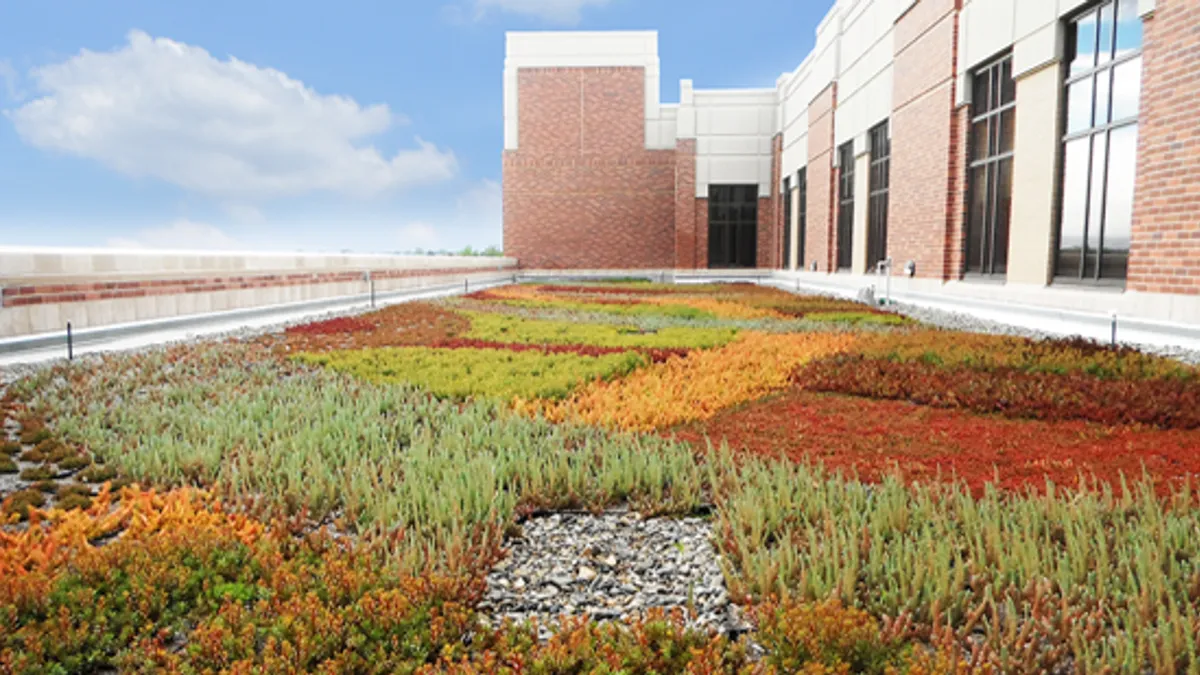Dive Brief:
- Steven Schleider, president of of Metropolitan Valuation Services — a commercial property appraisal and consulting practice — predicted that the green building focus in 2016 will be on LEED, green and cool roofs, sustainable construction, LED lighting and net-zero energy buildings, he wrote in the New York Real Estate Journal.
- Schleider said the number of buildings seeking LEED certification will increase "dramatically," even as critics might question what purpose it serves. He also predicted a significant increase in the use of LED lighting because of its potential for 50% energy savings, as well as reduced maintenance and long life span.
- Schleider said the industry will also see more cool roofs and green roofs in 2016, both offering energy savings, but with green roofs providing added benefits like urban produce gardens for tenants to manage. There will also be a rise in sustainable materials and, perhaps, in the most challenging trend of net-zero energy buildings, he predicted.
Dive Insight:
According to the U.S. Green Building Council (USGBC), in 2012, 41% of non-residential building starts were green, versus 2% in 2005. For 2015, the USGBC expected 40% to 48% of new nonresidential construction would be green, Schleider noted. He said green building is no longer a novelty or a question of "if," but one of how to maximize the countless green options available today.
Schleider added that the future is bright for green building and that new ideas and products available and in the pipeline will contribute to healthier schools, homes and reduce our carbon footprint.
Schleider is not the only one who has been touting the benefits of green building lately. The World Green Building Council issued a report this week that found a green retail building, with high levels of daylight, fresh air and greenery, creates happier customers who might spend more.
And last week, the USGBC issued its annual Top 10 States for LEED list. Illinois earned the number one spot for its 161 LEED certifications, representing 3.43 square feet of LEED-certified space per resident. The list also revealed that Washington, DC, while not a state, was actually the greenest region studied, with 84 projects and an impressive 19.30 square feet of certified space per resident.













